-
01-01-2016
Pressure ulcer healing with Plenusdermax® Calendula officinalis L. extract
Revista Brasileira de Enfermagem. 2016;69(2):250-257
Abstract
Pressure ulcer healing with Plenusdermax® Calendula officinalis L. extract
Revista Brasileira de Enfermagem. 2016;69(2):250-257
DOI 10.1590/0034-7167.2016690207i
Views0See moreABSTRACT
Objective:
to evaluate the therapeutic benefits of the bioactive extracts of Plenusdermax®Calendula officinalis for pressure ulcer healing.
Method:
an observational cohort study, including 41 patients with a diagnosis of pressure ulcer that was stable in size for more than three months. Patients were evaluated every two weeks, over 30 weeks, for: reduction of the wound area, infection control, types of tissue and exudate, and ulcer microbiology.
Results:
the proportions of patients who were completely healed after 15 and 30 weeks of treatment were 63% and 88%, respectively, and the mean healing time was 12.5±7.8 weeks. No adverse events were observed during treatment.
Conclusion:
the results of the study indicate that bioactive C. officinalis Plenusdermax® is a safe treatment that promotes healing of pressure ulcers.
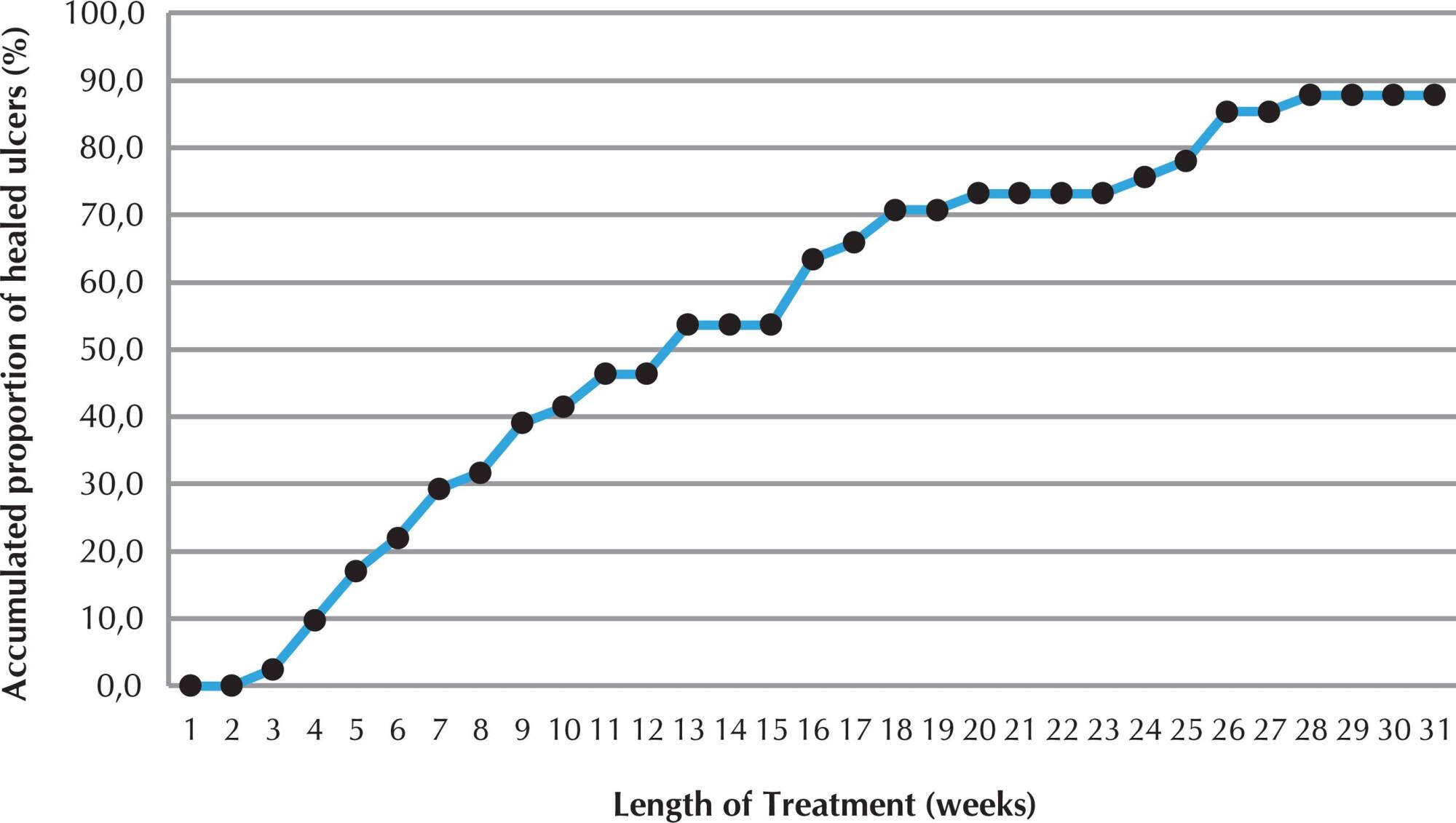
-
01-01-2016
Quality of life assessment for health promotion groups
Revista Brasileira de Enfermagem. 2016;69(2):242-249
Abstract
Quality of life assessment for health promotion groups
Revista Brasileira de Enfermagem. 2016;69(2):242-249
DOI 10.1590/0034-7167.2016690206i
Views0See moreABSTRACT
Objective:
to analyze the use of quality of life assessment (QOL) as a strategy to evaluate the work with health promotion groups in the community.
Method:
cross-sectional, descriptive and analytical study. Participants of two elderly groups (n=46) were individually interviewed to fill the sociodemographic instruments, WHOQOL-BREF and WHOQOL-OLD.
Results:
the participants were women with up to 79 years, who did not live with a partner, with up to four years of study, retired, with individual income of up to a minimum salary. The mean scores on the WHOQOL-BREF were higher on “Social Relations” and lower in the “Environment”. For the WHOQOL-OLD, the highest scores were achieved in facets “Social Participation” (G1) and “Past, Present and Future Activities” (G2), while “Death and Dying” facet obtained lower scores in both groups.
Conclusion:
the assessment of QOL appears to be useful in helping to identify the coordination aspects of life of elderly people that need to be better developed in groups.
-
01-01-2016
Transcultural adaptation and validation of the Brazilian version of Treatment Spirituality/Religiosity Scale
Revista Brasileira de Enfermagem. 2016;69(2):235-241
Abstract
Transcultural adaptation and validation of the Brazilian version of Treatment Spirituality/Religiosity Scale
Revista Brasileira de Enfermagem. 2016;69(2):235-241
DOI 10.1590/0034-7167.2016690205i
Views0See moreABSTRACT
Objective:
to perform the translation and transcultural adaptation to Brazilian Portuguese, and analyze the psychometric properties of the instrument Treatment Spirituality/Religiosity Scale (TSRS).
Method:
the sample consisted of 188 nursing students of technical and higher education. The reliability analysis by test-retest was performed one month after the first application of the instrument. To measure the construct validation, a factorial analysis was carried out.
Results:
the Brazilian version of the TSRS consisted of 10 items, with two factors. The reliability by test-retest showed a Kappa coefficient ranging from 0.22 to 0.47, and a global internal consistency Cronbach’s alpha of 0.85.
Conclusion:
the Brazilian version of the TSRS showed satisfactory values of validity and internal consistency, being suitable for use in the national context.
-
01-01-2016
Epidemiological characteristics and causes of deaths in hospitalized patients under intensive care
Revista Brasileira de Enfermagem. 2016;69(2):229-234
Abstract
Epidemiological characteristics and causes of deaths in hospitalized patients under intensive care
Revista Brasileira de Enfermagem. 2016;69(2):229-234
DOI 10.1590/0034-7167.2016690204i
Views0See moreABSTRACT
Objective:
to describe the epidemiological and sociodemographic characteristics of patients hospitalized in an ICU.
Method:
an epidemiological, descriptive and retrospective study. Population: 695 patients admitted from January to December 2011. The data collected were statistically analyzed with both absolute and relative frequency distribution.
Results:
61.6% of the patients are male, aged 40 to 69 years, and most of them came from the surgery rooms. The most frequent reason for admission was diseases of the circulatory system (23.3%). At discharge from the ICU, 72.4% of the patients were sent to other units of the same institution, 31.1% to the intermediate care unit, and 20.4% died, of which 24.6% from diseases of the circulatory system. The afternoon shift had 45.8% of the admissions and 53.3% of the discharges.
Conclusion:
the description of the sociodemographic and epidemiological features guides the planning of nursing actions, providing a better quality service.
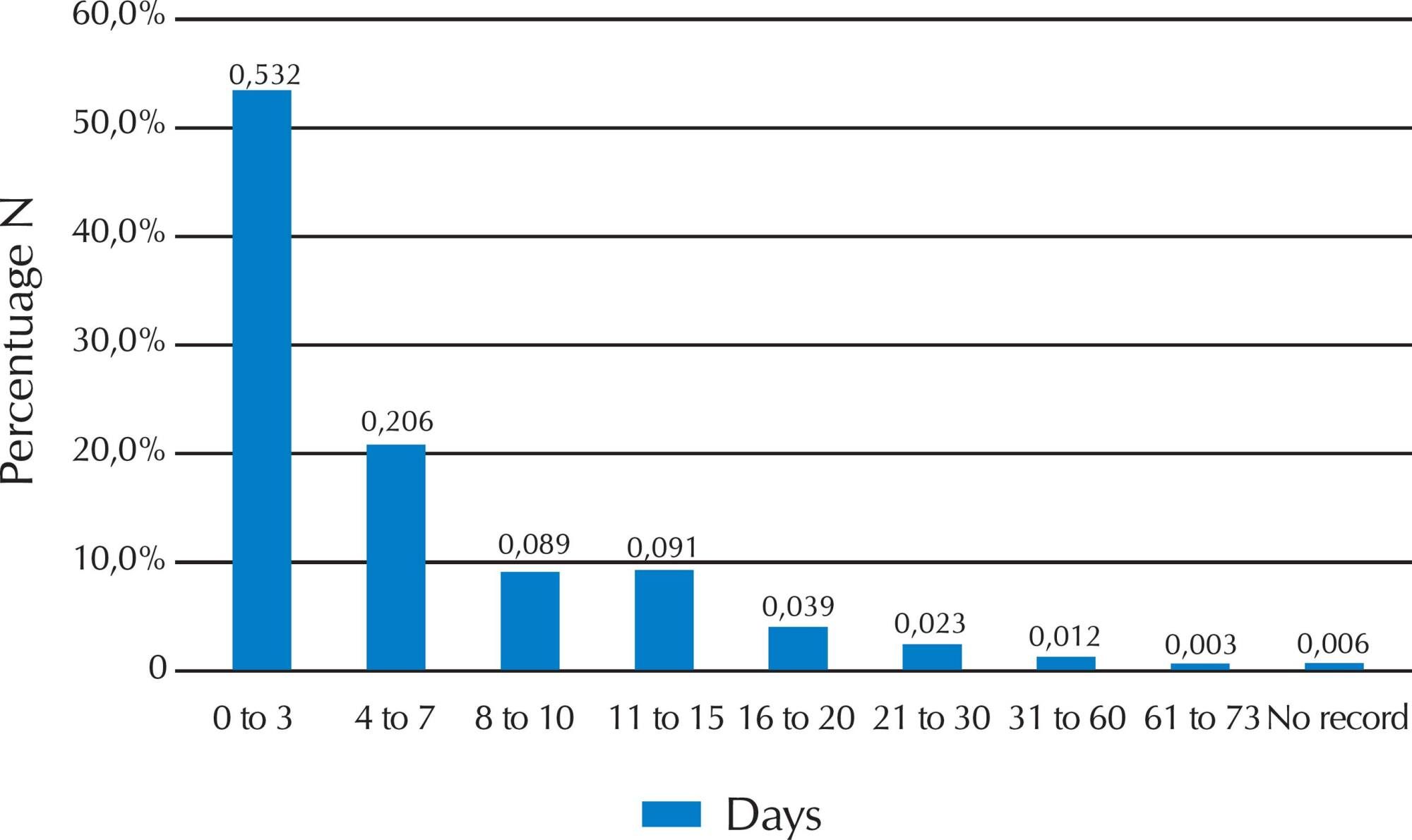
-
01-01-2016
Hospital discharge of premature newborns: the father’s experience
Revista Brasileira de Enfermagem. 2016;69(2):221-228
Abstract
Hospital discharge of premature newborns: the father’s experience
Revista Brasileira de Enfermagem. 2016;69(2):221-228
DOI 10.1590/0034-7167.2016690203i
Views0See moreABSTRACT
Objective:
To describe the father’s experience with his premature child discharge of the Neonatal Intensive-Care Unit and to point out interventions to promote this experience.
Method:
Qualitative research with eight fathers, adopting the Symbolic Interactionism as theoretical reference and thematic narrative research as methodological frame.
Results:
The analysis of data has allowed us to describe the experience of the father from three thematic units: “fatherhood boundaries”, “high responsibility for the child” and “social network and support”.
Conclusion:
The father feels insecure with the idea of taking care of his child at home because of the lack of professional support and the initial contact with the child in the Neonatal Intensive-Care Unit.
-
01-01-2016
Nurses from the Mobile Emergency Service: profile and developed activities
Revista Brasileira de Enfermagem. 2016;69(2):213-220
Abstract
Nurses from the Mobile Emergency Service: profile and developed activities
Revista Brasileira de Enfermagem. 2016;69(2):213-220
DOI 10.1590/0034-7167.2016690202i
Views0See moreABSTRACT
Objective:
to characterize the profile and identify the activities developed by nurses from the Mobile Emergency Care Service of a state of southern Brazil.
Method:
an exploratory, descriptive study. Data were collected through a questionnaire with 63 nurses.
Results:
the profile showed a workforce predominantly female, young and having specialized training. The activities were organized in the dimensions of caring, managing and educating, verifying the predominance of the first one. Care actions involved multiple procedures, but the use of the Systematization of Nursing Care (SNC) was not mentioned in the development of care activities. Then, the managerial dimension with a predominance of bureaucratic activities was emphasized. Educational activities were less prominent.
Conclusion:
care actions are the focus of the activities of nurses, predominantly the prescribed institutional care without the use of instruments such as SNC that could contribute to the greater visibility of their professional work.
-
01-01-2016
Desafios e imperativos de liderança na cooperação com a Organização Mundial da Saúde
Revista Brasileira de Enfermagem. 2016;69(2):207-208
Abstract
Desafios e imperativos de liderança na cooperação com a Organização Mundial da Saúde
Revista Brasileira de Enfermagem. 2016;69(2):207-208
DOI 10.1590/0034-7167.2016690201i
Views0Quando uma instituição promove inovações estratégicas, é colocado em curso o rompimento com a tradição, provocando mudanças e, por consequência, alterando as expectativas e as perspectivas tanto dos seus clientes internos, quanto dos seus clientes externos.Os motores das inovações adotadas são acionados por uma visão ampliada dos fins da organização, alargando suas fronteiras em termos […]See more -
01-01-2016
Challenges and leadership imperatives in cooperation with the World Health Organization
Revista Brasileira de Enfermagem. 2016;69(2):207-208
Abstract
Challenges and leadership imperatives in cooperation with the World Health Organization
Revista Brasileira de Enfermagem. 2016;69(2):207-208
DOI 10.1590/0034-7167.2016690201i
Views0When an institution promotes strategic innovations, it starts the rupture with tradition, causing changes and, consequently, altering the expectations and prospects of both their internal clients, as their external clients.The engines of the adopted innovations are driven by a broader view of the organization’s purposes, expanding its borders in terms of breadth and depth, which […]See more
-
06-28-2021
Baby-Friendly Hospital Initiative for Neonatal Wards: impact on breastfeeding practices among preterm infants
Revista Brasileira de Enfermagem. 2021;74:e20200909
Abstract
Baby-Friendly Hospital Initiative for Neonatal Wards: impact on breastfeeding practices among preterm infants
Revista Brasileira de Enfermagem. 2021;74:e20200909
DOI 10.1590/0034-7167-2020-0909
Views0See moreABSTRACT
Objective:
to assess breastfeeding support practices for preterm infants at two Baby-Friendly hospitals in southeastern Brazil, comparing the effect of implementing the guidelines for Baby-Friendly Hospital Initiative for Neonatal wards.
Methods:
a quasi-experimental study, pre- and post-intervention with control. Implementation of this initiative in the intervention hospital using Knowledge Translation. Data collection on compliance with the adapted Ten Steps, Three Guiding Principles and the Code before and after the intervention was carried out via interviews with mothers of preterm babies and professionals, unit observation and documentary analysis in the intervention and control hospitals. Intra-intergroup comparison was performed.
Results:
increases in global compliance with the Three Principles, Ten Steps, the Code, partial compliance with each Principle and in most Steps was greater in the intervention hospital. Conclusion: this initiative improved practices related to breastfeeding in the intervention hospital, demonstrating the potential to improve care and breastfeeding in neonatal wards.

-
03-15-2021
Effectiveness of mobile applications in pregnant women’s adherence to prenatal consultations: randomized clinical trial
Revista Brasileira de Enfermagem. 2021;74:e20190599
Abstract
Effectiveness of mobile applications in pregnant women’s adherence to prenatal consultations: randomized clinical trial
Revista Brasileira de Enfermagem. 2021;74:e20190599
DOI 10.1590/0034-7167-2019-0599
Views0See moreABSTRACT
Objective:
to evaluate the effectiveness of a mobile application for cell phones in the adherence of pregnant women to prenatal consultations.
Method:
a randomized controlled clinical trial, simple-blind with two parallel groups, conducted from January to December 2018. Data collection was carried out through a structured interview at the end of the third trimester of pregnancy. For analysis, Chi-Square and Mann-Whitney tests were used. The sample consisted of 88 pregnant women from 2 Family Health Strategies in Northeast Brazil. Participants were randomized into two groups: intervention (IG), who used the application, and control (CG), who attended prenatal consultations.
Results:
pregnant women who used the application (IG) attended a greater number of consultations when compared to participants in the CG, identifying a statistical difference between the groups (p<0.05).
Conclusion:
the application showed to be an effective health technology to improve adherence to prenatal care. Brazilian Registry of Clinical Trials: RBR-74SNST.

-
03-29-2021
Digital educational technology for care management of diabetes mellitus people’s feet
Revista Brasileira de Enfermagem. 2021;74:e20190725
Abstract
Digital educational technology for care management of diabetes mellitus people’s feet
Revista Brasileira de Enfermagem. 2021;74:e20190725
DOI 10.1590/0034-7167-2019-0725
Views0See moreABSTRACT
Objective:
to develop and validate a distance learning course aimed at the pillars of care management of diabetes mellitus people’s feet.
Method:
a technological production research using Moodle Virtual Learning Environment, based on Andragogy, Constructionism and Instructional Design. Content is based on consensus guidelines on diabetic foot. Validation was carried out by distance education, diabetes and/or diabetic foot experts.
Results:
the course’s content is based on diabetic foot guidelines, and is structured in units with didactic material, videos, forums and questionnaires to assess the participants’ learning. The judges considered it appropriate to meet nurses’ needs in clinical practice.
Conclusion:
the virtual learning course has been validated, being a promising strategy for training nurses on care management of diabetes mellitus people’s feet.
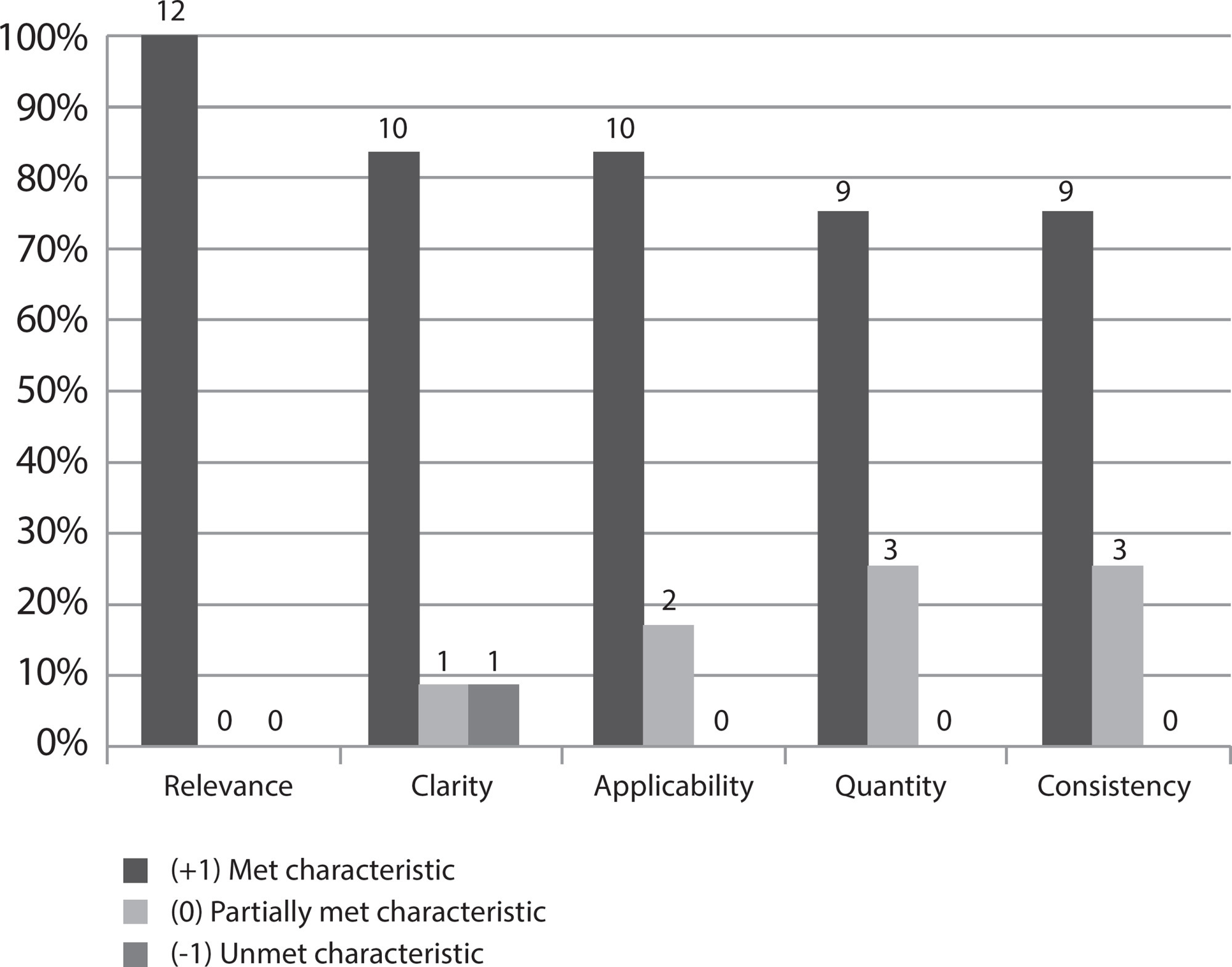
-
05-21-2021
Evolution of nursing teaching in the use of education technology: a scoping review
Revista Brasileira de Enfermagem. 2021;74:e20200422
Abstract
Evolution of nursing teaching in the use of education technology: a scoping review
Revista Brasileira de Enfermagem. 2021;74:e20200422
DOI 10.1590/0034-7167-2020-0422
Views1See moreABSTRACT
Objective:
To identify and map the technological tools of information and communication to support the teaching learning process in Nursing teaching courses.
Methods:
This is a scoping review whose search was carried out in seven databases and in grey literature. After an initial analysis of the selection, 88 texts were read integrally, and 29 made up the final sample.
Results:
Virtual learning environment and object, simulation, hypermedia, and software or cellphone applications were the tools the nursing professors used the most. Studies highlight that the application of technology was important in the teaching-learning process, since it encouraged teaching based on safe care, motivating and developing abilities/competences, supported on significant, effective, flexible, and autonomous learning.
Conclusion:
The contribution of the technology for nursing formation stands out, but it should be highlighted that its employment must be critical, reflective, based on pedagogical theories and developed by trained professors.
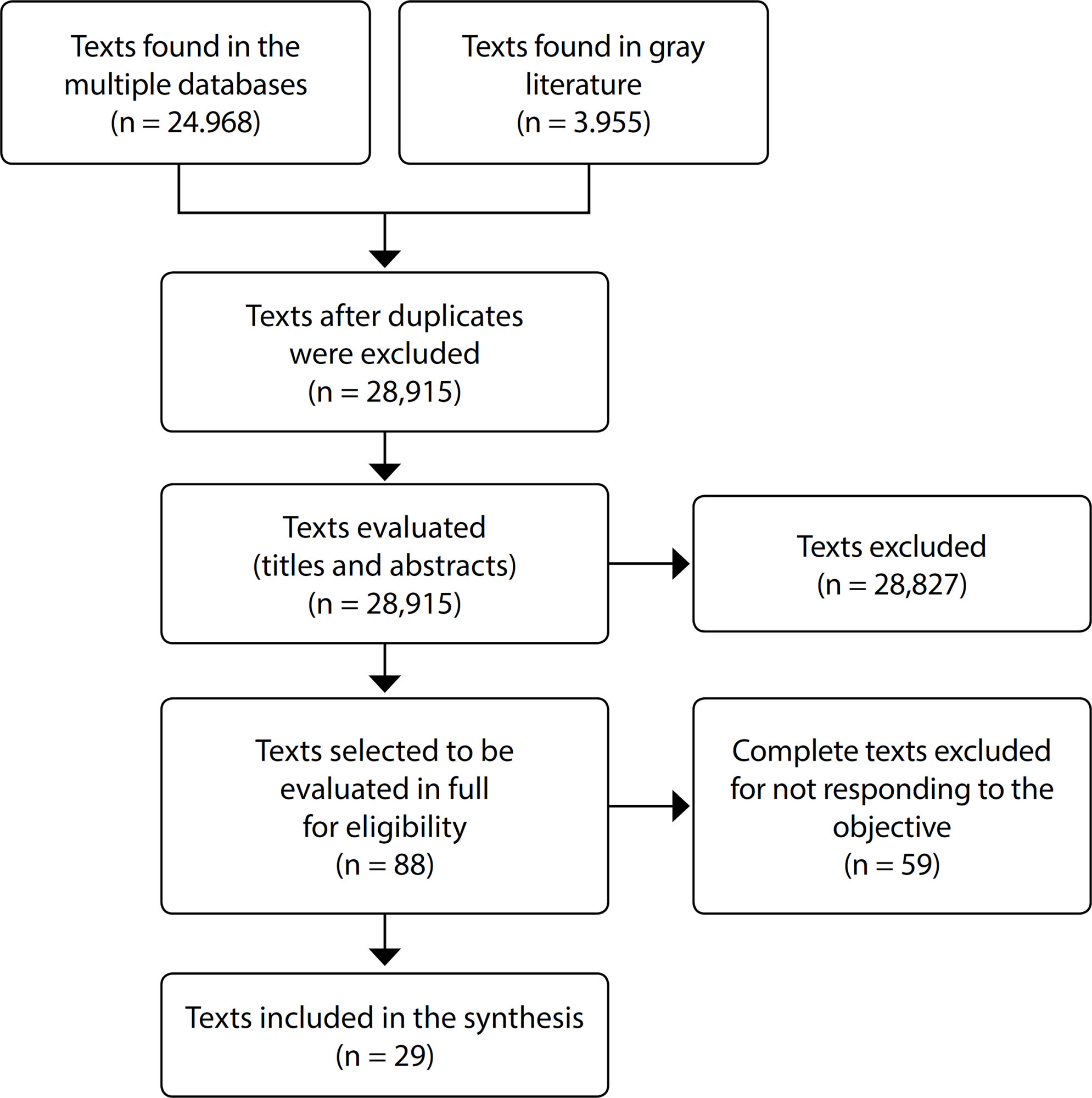
-
ORIGINAL ARTICLE05-24-2021
Construction and validation of educational material on promoting breastfeeding in schools
Revista Brasileira de Enfermagem. 2021;74:e20200511
Abstract
ORIGINAL ARTICLEConstruction and validation of educational material on promoting breastfeeding in schools
Revista Brasileira de Enfermagem. 2021;74:e20200511
DOI 10.1590/0034-7167-2020-0511
Views1See moreABSTRACT
Objective:
to build and validate an educational technology on the promotion of breastfeeding for schoolchildren.
Methods:
a methodological study was developed through a bibliographic survey, situational diagnosis, creation of illustrations, layout, design and texts, validation of the material with the help of expert judges and target audience.
Results:
the content judges enabled the validation of the material with an overall Content Validity Index of 90%, the judges of the design Suitability Assessment of Materials of 90.4% and the target audience with a 95.6% agreement. The readability percentage proved to be excellent, with an overall score of 100%.
Conclusion:
the educational technology proved to be a valid and reliable instrument to promote a breastfeeding culture among schoolchildren.

-
09-01-2021
Nursing APHMÓVEL: mobile application to register the nursing process in prehospital emergency care
Revista Brasileira de Enfermagem. 2021;74:e20201029
Abstract
Nursing APHMÓVEL: mobile application to register the nursing process in prehospital emergency care
Revista Brasileira de Enfermagem. 2021;74:e20201029
DOI 10.1590/0034-7167-2020-1029
Views1See moreABSTRACT
Objectives:
to develop an application for a mobile device for the registration of the Nursing Process by nurses of the Mobile Emergency Care Service.
Methods:
applied research with technology development based on software engineering and Apple’s Human Interface Guidelines. It had the support of an application developer and a designer. The proposal was built in four steps (scope definition, planning, prototype creation and development).
Results:
the application “Nursing APHMóvel” allows to record the steps of the Nursing Process, such as history, nursing diagnoses, outcomes and interventions with the possibility of storing the data and/or file in printable format. The technological innovation has location features, scales with automatic sum of items, touchscreen, and offline operation.
Conclusions:
it was possible to develop the application with the potential for computerized documentation of the Nursing Process by nurses working in the Mobile Emergency Care Service.
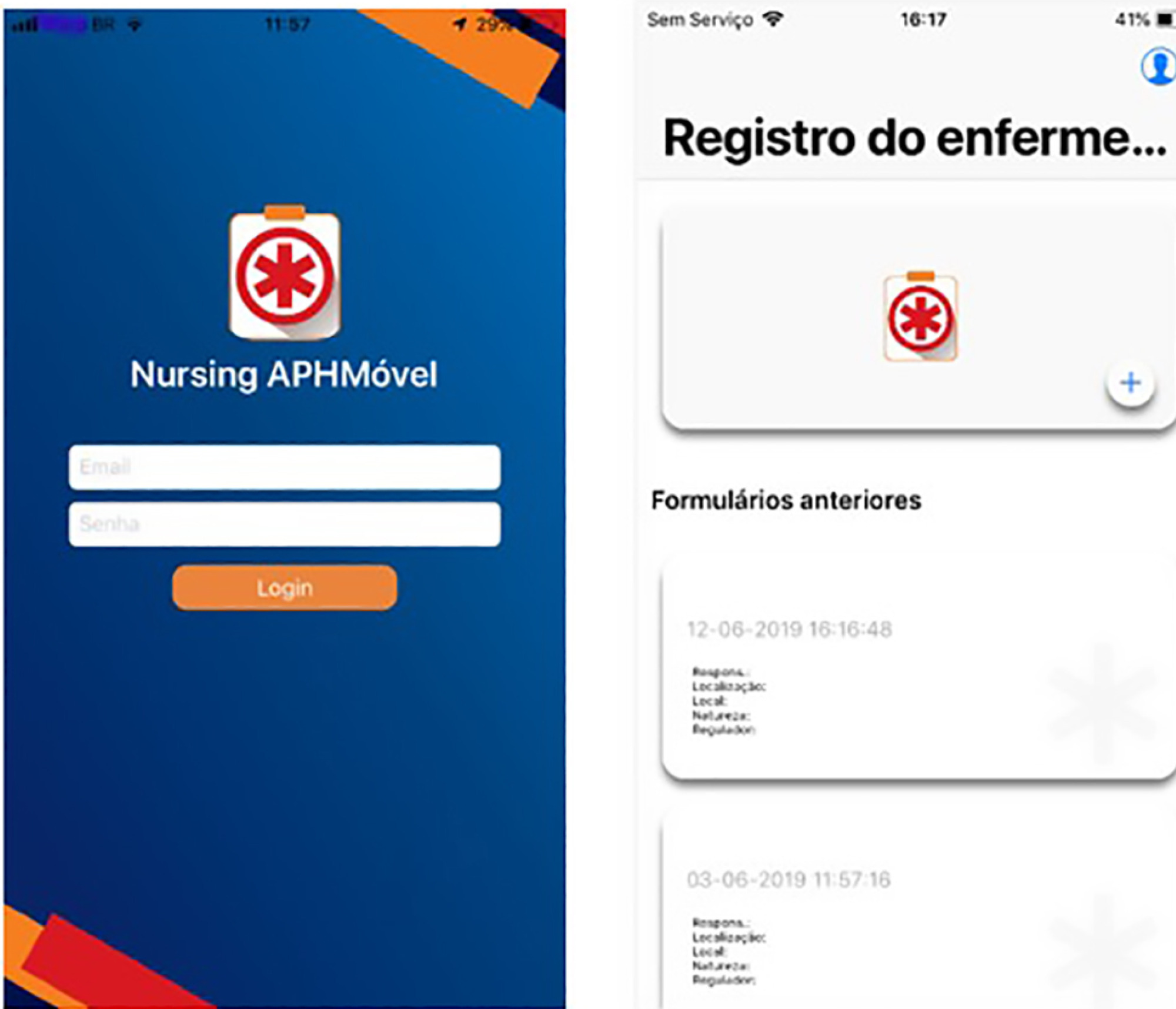
-
03-15-2021
Advanced Practice Nursing in Latin America and the Caribbean: seeking its implementation
Revista Brasileira de Enfermagem. 2021;74:e74suppl601
Abstract
Advanced Practice Nursing in Latin America and the Caribbean: seeking its implementation
Revista Brasileira de Enfermagem. 2021;74:e74suppl601
DOI 10.1590/0034-7167.202174suppl601
Views1Healthcare organizations are increasingly complex and specialized, seeking to optimize their quality and safety standards, and be able to meet the growing needs of their users. To face this reality, health professionals need to adapt to respond in time to the demands of the health context. In turn, the World Health Organization (WHO), through the […]See more -
ORIGINAL ARTICLE10-01-2022
Self-care of elderly people with diabetes mellitus and the nurse-patient interpersonal relationship
Revista Brasileira de Enfermagem. 2022;75(1):e20201257
Abstract
ORIGINAL ARTICLESelf-care of elderly people with diabetes mellitus and the nurse-patient interpersonal relationship
Revista Brasileira de Enfermagem. 2022;75(1):e20201257
DOI 10.1590/0034-7167-2020-1257
Views1INTRODUCTIONChronic non-communicable diseases are the main causes of death and health problems in the world, causing about 41 million deaths each year, which corresponds to approximately 71% of all deaths. Among these diseases, diabetes mellitus has stood out due to the increase in its incidence and prevalence().Estimates indicate that 463 million people live with diabetes […]See more
-
ORIGINAL ARTICLE07-13-2020
Mental health of nursing in coping with COVID-19 at a regional university hospital
Revista Brasileira de Enfermagem. 2020;73:e20200434
Abstract
ORIGINAL ARTICLEMental health of nursing in coping with COVID-19 at a regional university hospital
Revista Brasileira de Enfermagem. 2020;73:e20200434
DOI 10.1590/0034-7167-2020-0434
Views0See moreABSTRACT
Objective:
to identify prevalence and factors associated with anxiety and depression in nursing professionals who work to cope with COVID-19 at a university hospital.
Methods:
a cross-sectional observational study using a sociodemographic questionnaire and Hospital Anxiety and Depression Scale, with 88 nursing professionals. Data were analyzed using absolute and relative frequency and Statistical Package for the Social Sciences.
Results:
there was prevalence of anxiety (48.9%) and depression (25%). The majority of the sample consisted of women over 40 years old, married or in a common-law marriage, white, with higher education or graduate degree, with an income above 3,000.00 reais, public servants, working 40 hours a week and working in the hospital from 1 to 5 years.
Conclusion:
we must consider the impact on mental health nursing caused by COVID-19 and intervene with coping strategies to minimize the suffering of professionals.
-
REFLECTION04-22-2020
Thematic content analysis using ATLAS.ti software: Potentialities for researchs in health
Revista Brasileira de Enfermagem. 2020;73(3):e20190250
Abstract
REFLECTIONThematic content analysis using ATLAS.ti software: Potentialities for researchs in health
Revista Brasileira de Enfermagem. 2020;73(3):e20190250
DOI 10.1590/0034-7167-2019-0250
Views0See moreABSTRACT
Objective:
to describe the most important tools of ATLAS.ti Software and to associate them with the procedures of Thematic Content Analysis.
Method:
It is a theoretical reflection of the Content Analysis phases of Laurence Bardin, associating them with software tools Atlas.ti and showing its usefulness for data analysis in qualitative research.
Results:
historical contextualization and the available resources of Atlas.ti software with presentation of health research involving the phases of thematic content analysis.
Final considerations:
The Atlas.ti software assists in the accomplishment of the thematic content analysis being this promising association in health research.

-
REFLECTION10-26-2020
Nursing education: challenges and perspectives in times of the COVID-19 pandemic
Revista Brasileira de Enfermagem. 2020;73:e20200683
Abstract
REFLECTIONNursing education: challenges and perspectives in times of the COVID-19 pandemic
Revista Brasileira de Enfermagem. 2020;73:e20200683
DOI 10.1590/0034-7167-2020-0683
Views0See moreABSTRACT
Objective:
To discuss the challenges and perspectives of nursing education in times of the COVID-19 pandemic.
Methods:
Reflection study, with theoretical approach based on national and international publications, allied to the experience of researchers in the area of nursing education.
Results:
Four sections are identified: Nursing education: current affairs and perspectives; Education and technologies in time of pandemic: acceleration, alteration and paralysis; Difference between emergency, intentional and remote teaching; the return to the “new normality”: new structuring axes and legal norms.
Final considerations:
The conclusion is that longstanding challenges have emerged with the pandemic, and the processes of acceleration, change and paralysis have marked education in these times. Moreover, epidemiological, technological and psychological aspects should be more valued in the return to activities.
-
ORIGINAL ARTICLE11-13-2020
Social determinants of health and COVID-19 infection in Brazil: an analysis of the pandemic
Revista Brasileira de Enfermagem. 2020;73:e20200673
Abstract
ORIGINAL ARTICLESocial determinants of health and COVID-19 infection in Brazil: an analysis of the pandemic
Revista Brasileira de Enfermagem. 2020;73:e20200673
DOI 10.1590/0034-7167-2020-0673
Views0See moreABSTRACT
Objective:
To analyze the influence of socioeconomic, demographic, epidemiological factors, and the health system structure in the evolution of the COVID-19 pandemic in Brazil.
Methods:
Ecological study with variables extracted from databases, having the incidence and mortality by COVID-19 until August 23, 2020, in Brazilian states, as response variables. The magnitude of the associations was estimated using Spearman’s correlation coefficient and multiple regression analysis.
Results:
In the Brazilian states, 59.8% of variation in the incidence of COVID-19 was justified by income inequality, significant home densification, and higher mortality. In the case of mortality, those same variables explained 57.9% of the country’s variations in federal units.
Conclusion:
Our results indicate that socioeconomic factors influenced the evolution and impact of COVID-19 in Brazil. Thus, we suggest comprehensive actions to ensure economic conditions and strengthening of health networks for populations with socioeconomic vulnerability.
-
ORIGINAL ARTICLE02-27-2020
Prevalence of symptoms and quality of life of cancer patients
Revista Brasileira de Enfermagem. 2020;73(2):e20180287
Abstract
ORIGINAL ARTICLEPrevalence of symptoms and quality of life of cancer patients
Revista Brasileira de Enfermagem. 2020;73(2):e20180287
DOI 10.1590/0034-7167-2018-0287
Views0See moreABSTRACT
Objectives:
to analyze the prevalence of symptoms and their relationship with the quality of life of cancer patients.
Methods:
this is a cross-sectional study with 107 patients evaluated using a sociodemographic instrument, the hospital anxiety and depression scale (HADS) and the quality of life scale (EORTC-QLQ-C30). Pearson’s correlation test was used to evaluate the relationship between symptoms and quality of life.
Results:
prevalence of female patients (56.1%), 55 years as the mean age and 10 years of schooling. Fatigue (76.6%), insomnia (47.7%), pain (42.1%), loss of appetite (37.4%), anxiety (31.8%) and depression (21.5%) were identified. Anxiety and depression symptoms presented a negative correlation with quality of life and positive correlation with physical symptoms.
Conclusions:
fatigue, insomnia, pain and loss of appetite were the most common and most intense symptoms. Anxiety and depression symptoms presented a negative correlation with quality of life and positive correlation with physical symptoms.
-
ORIGINAL ARTICLE08-10-2020
Braden Scale in pressure ulcer risk assessment
Revista Brasileira de Enfermagem. 2020;73(6):e20190413
Abstract
ORIGINAL ARTICLEBraden Scale in pressure ulcer risk assessment
Revista Brasileira de Enfermagem. 2020;73(6):e20190413
DOI 10.1590/0034-7167-2019-0413
Views0See moreABSTRACT
Objective:
To analyze the applicability of the Braden Scale to individuals admitted to an Intensive Care Unit (ICU) with the nursing diagnosis Impaired Physical Mobility, in its prediction potential to develop pressure ulcer (PU).
Methods:
A cross-sectional, quantitative study that evaluated all patients hospitalized in an ICU between November 2016 and February 2017, with the Braden Scale.
Results:
The prevalence of PU was 35.8% (24/67), in male individuals 58.3% (14/24), diagnosed with ischemic CVA 51.9% (12/27), and with hemorrhagic CVA 7.4% (2/27). Among patients classified at severe risk of developing pressure ulcer, 83.3% (20/53) developed it, and 76.7% (33/53) did not develop it.
Conclusion:
The performance of the Braden Scale showed a balance between sensitivity and specificity, confirming it as a better predictive risk assessment instrument in this group of patients.
-
REVIEW03-24-2021
Strategies of active learning methodologies in nursing education: an integrative literature review
Revista Brasileira de Enfermagem. 2021;74(1):e20200130
Abstract
REVIEWStrategies of active learning methodologies in nursing education: an integrative literature review
Revista Brasileira de Enfermagem. 2021;74(1):e20200130
DOI 10.1590/0034-7167-2020-0130
Views0See moreABSTRACT
Objectives:
to analyze the scientific evidence on the strategies of active learning methodologies used in the training of nurses, as well as their contributions and obstacles in training.
Methods:
integrative literature review conducted with 33 selected articles in the Medical Literature Analysis and Retrieval System Online, Latin American and Caribbean Literature in Health Sciences, Nursing Database, Scopus, Web of Science and Education Resources Information Center databases.
Results:
among the strategies, simulation, problem-based learning and flipped classroom were highlighted. The active search, the integration of theory and practice and group work were examples of contributions to the training of nurses. However, the lack of preparation of the actors and the lack of structural support contribute to the dissatisfaction of the students.
Final Considerations:
the active learning methodology places the student at the heart of the learning process, favors critical thinking and the ability to make decisions.
-
ORIGINAL ARTICLE09-16-2019
Validation of educational booklet: an educational technology in dengue prevention
Revista Brasileira de Enfermagem. 2019;72(5):1318-1325
Abstract
ORIGINAL ARTICLEValidation of educational booklet: an educational technology in dengue prevention
Revista Brasileira de Enfermagem. 2019;72(5):1318-1325
DOI 10.1590/0034-7167-2018-0771
Views0See moreABSTRACT
Objective:
to validate a booklet on dengue prevention in order to make it an educational technology to be used with the population.
Method:
methodological study, carried out with two groups of judges specialized in health and other areas. For data analysis, the calculation of Content Validity Index was carried out.
Results:
the booklet, in general, was considered valid by the expert judges, since it obtained an overall CVI of 70%. However, it has undergone a textual and aesthetic re-elaboration. The changes were based on the substitution of expressions, phrases, information additions and language adequacy. The illustrations were redone, adding clarity, expressiveness, movement, interaction and contextualization.
Conclusion:
the booklet is valid to be used for the population, with the purpose of informing, in a playful way, the forms of prevention and combat to mosquito transmitting dengue.

Search
Search in:
Nuvem de Tags
Adolescente (85) Atenção Primária à Saúde (239) COVID-19 (91) Criança (91) Cuidados de Enfermagem (269) Educação em Enfermagem (151) Educação em Saúde (139) Enfermagem (930) Enfermagem Pediátrica (86) Estudantes de Enfermagem (77) Estudos de Validação (131) Família (87) Idoso (208) Promoção da Saúde (99) Qualidade de Vida (104) Saúde do Trabalhador (86) Saúde Mental (145) Saúde Pública (82) Segurança do Paciente (150) Tecnologia Educacional (100)



